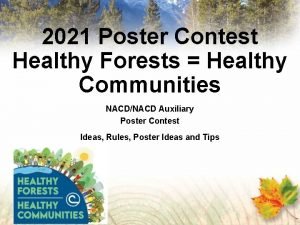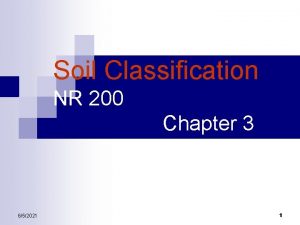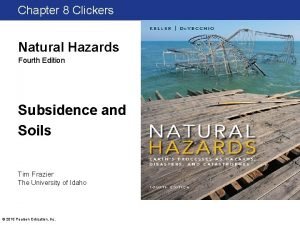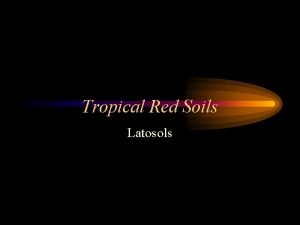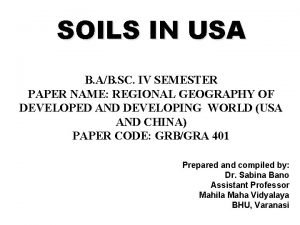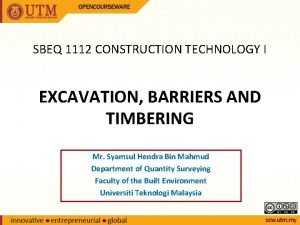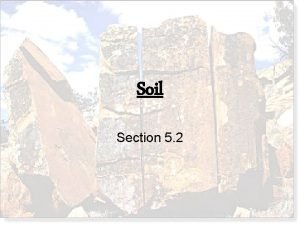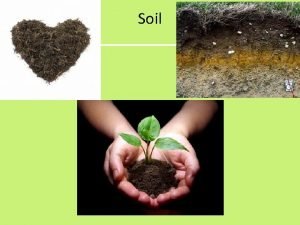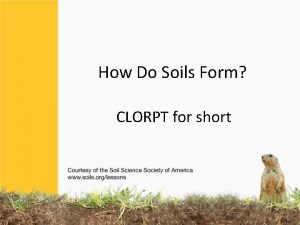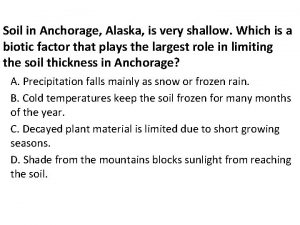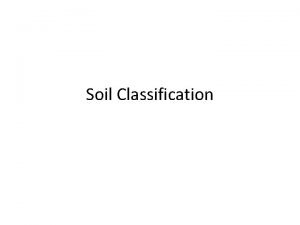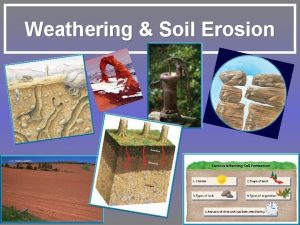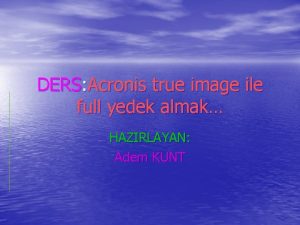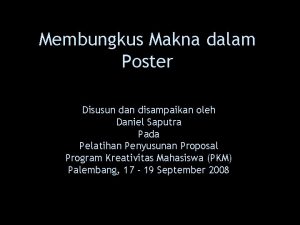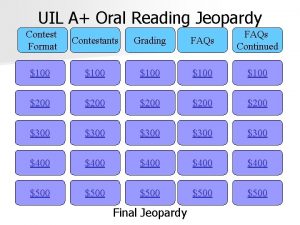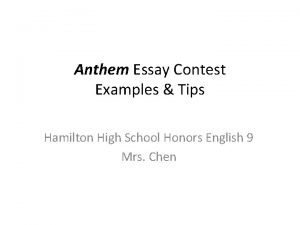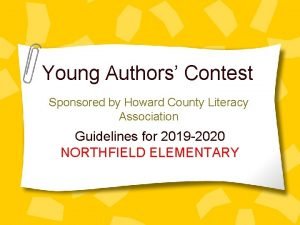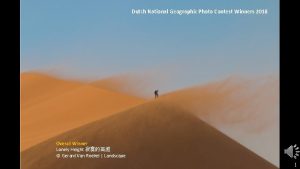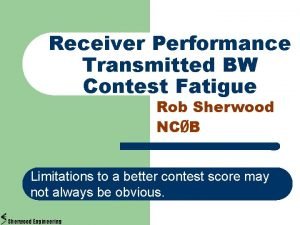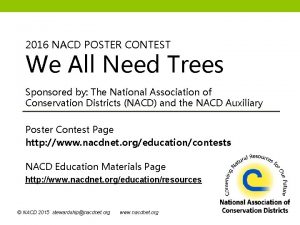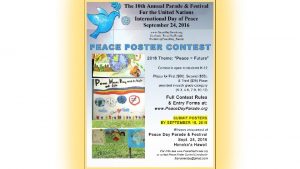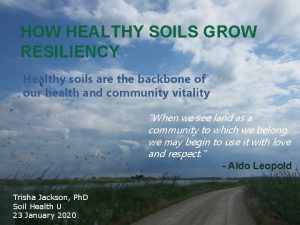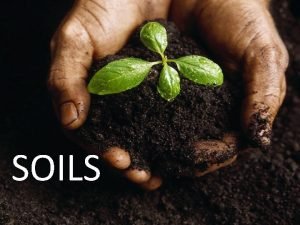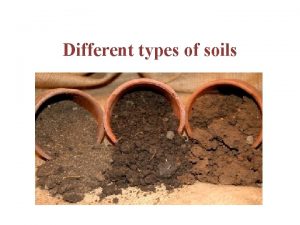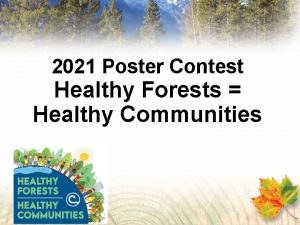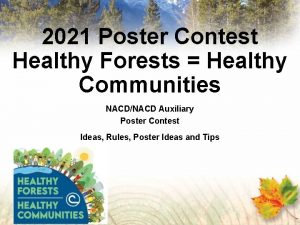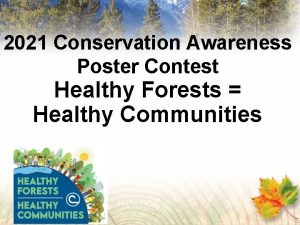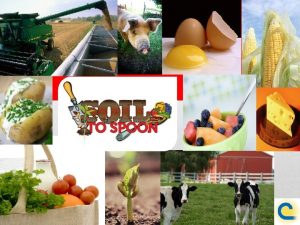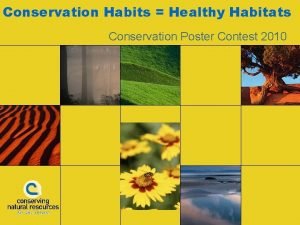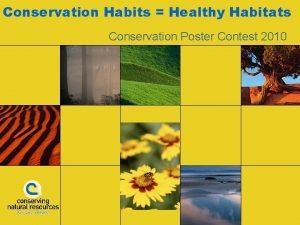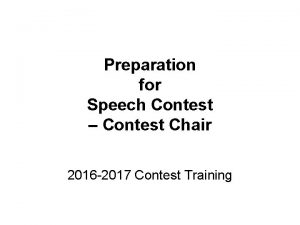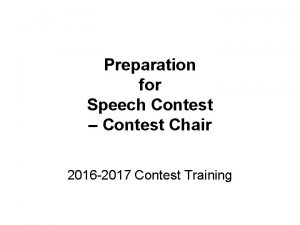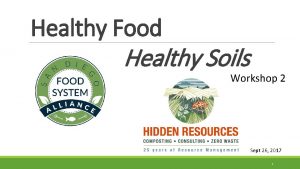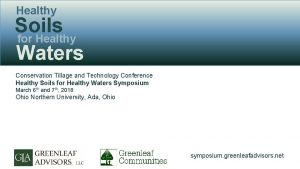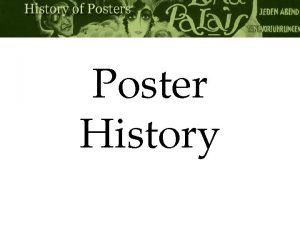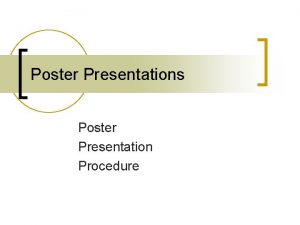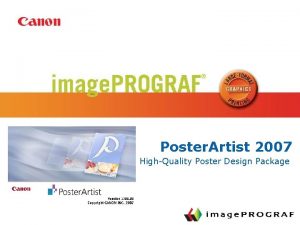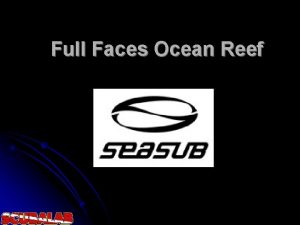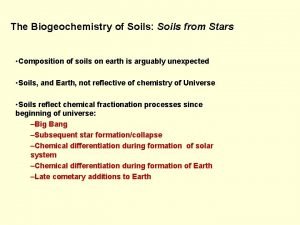2017 NACD POSTER CONTEST Healthy Soils Are Full



























- Slides: 27

2017 NACD POSTER CONTEST Healthy Soils Are Full of Life! Sponsored by: The National Association of Conservation Districts (NACD) and the NACD Auxiliary Poster Contest Page http: //www. nacdnet. org/education/contests NACD Stewardship Program Page http: //www. nacdnet. org/general-resources/stewardshipprogram/

2017 Educational Theme The NACD Stewardship and Education Committee’s 2017 educational and contest theme is “Healthy Soils Are Full of Life!”

What is Soil? Soil is the upper layer of the Earth’s surface in which plants grow. It is made of tiny rocks, clay, minerals and humus (remains of dead plants and animals). Soil also includes air and water.

Why are soils important? Soils are the foundation for everything that we are and do. From the clothes we wear, the food we eat, to the houses we live in, it all has its start from the soil in some way! Healthy soils are important for growing our food. We need healthy food to live and grow. Plants need healthy soil to live and grow. Some foods that we eat grow above the ground. Others grow below the ground.

Where do soils come from? Soils don’t have parents like we do, but they do have parent materials. Parent materials that help make soil are rocks and minerals that have been broken up into tiny pieces. Soils can be many different colors because they come from many different rocks and minerals.

What are soils made up of? Soils are made up of layers that are called horizons. The 0 Horizon is a thin top layer of organic material like decomposing plant materials or the remains of animals and feces. The A horizon is commonly referred to as topsoil. It is usually dark brown in color and rich in nutrients. The B horizon is often referred to as subsoil. It contains minerals or organic matter that has been carried down from upper horizons by water. The C horizon is the parent material of the soil composed of broken up bedrock or sediments. The R layer is the unweathered parent material of the soil.

Soils are alive! Lots of bugs, worms and other Critters live in the soil. Some are so small you need a hand lens to see them. Worms living in your yard, garden or farm field are a real good sign that you have healthy soil. They make holes that help water and air get deep into the soil.

What is soil erosion? Take a look outside after it rains. Look at the water in rivers, in ponds, or running along the roads. The water may be clear or muddy. If it is muddy, soil is being washed away and mixing with the water. This is soil erosion. Soil is being carried away by rainwater. If you see soil erosion happening in your yard, try planting some plants or trees. Roots from plants and trees help hold soil in place, preventing erosion.

What is soil conservation? Soil conservation is when you prevent soil erosion by planting new trees and plants and take care of them. It is important to keep our soil in place and healthy, otherwise we would be unable to plant the crops that are necessary to feed all of the people and animals on earth.

Healthy Soils – Healthy People

How does food get from the soil to your spoon? Getting food from the soil into your spoon takes a lot of hard work by many people. The food you eat comes from plants and animals grown by a farmer or raised by a rancher. Then food is moved from fields to processing and packaging plants and finally to stores or restaurants where it can be sold.

How does food get from the soil to your spoon?

What food should I eat each day to be healthy? Your body needs healthy food from all five food groups every day – fruits, vegetables, grains, dairy and protein.

Soil Facts It can take up to 1, 000 years for an inch of soil to form. One tablespoon of soil has more organisms in it than here are people on earth. Not all soil is good for growing plants. There are thousands of different types of soil across the world. The USA alone possesses more than 70, 000 varieties of soil! Soil acts as a filter for underground water, filtering out pollutants. Soil is at the bottom of the food chain, yet it is the cornerstone of life on earth.

Keeping the Soil We Need Taking good care of our soil is the best way to make sure that we have the soil we need for food, water, air, clothes and many other things. Nutritious and good food can only be produced if our soils are healthy living soils. Contact your local Soil and Water Conservation District to find out what YOU can do to help protect your soil.

Poster Contest Details The national winning poster will be used for local and state level promotion materials. Send entries to your local conservation district http: //www. nacdnet. org/general-resources/conservation-districtdirectory/ To find out the dates of your local contest!!!! Contest Categories K-1 st Grade 2 nd-3 rd Grade 4 th-6 th Grade 7 th-9 th Grade 10 th-12 th Grade

Poster Contest Details Winning entries will be selected by your local and sent to the state level for judging. State winner entries will then be sent to the national level, where one overall winner will be selected announced at the 2017 NACD Annual Meeting in Denver, CO on January 31 st. Winners will be posted to the NACD website. Monetary prizes will be awarded to the 1 st-3 rd place winners in each category at the national level. $200 for 1 st Place Winners $150 for 2 nd Place Winners $100 for 3 rd Place Winners Monetary awards from the NACD Auxiliary & Albert I. Pierce Foundation

Poster Contest Details Turn poster in on time for judging. Your local conservation district’s entry deadline is 4/7/2017 Attach poster entry form on the back and be sure it is signed by a parent or guardian. Entry must be contestant's original creation and may not be traced from photographs or other artists' published works.

Poster Contest Details Any media may be used to create a flat poster • • Paint Crayons Colored pencil Charcoal Stickers Paper Or other materials Poster size must be between 8. 5" x 11" and 22" x 28". (unless another size is required by your local or state contest)

What makes a good Poster? Attracts attention Is simple and concise Uses colors and white space effectively Text is large enough to be easily read

Brainstorming Poster Ideas • Research the topic of theme • Brainstorm ideas and make a list • Use theme as your title: Healthy Soils Are Full of Life!

Brainstorming Poster Ideas • Use some of the important soil issues from this presentation. • Look around your community for ideas. • Talk to professionals in the industry. • Research soils online and use the information found in your poster.

Dos: • Do limit text, and balance a combination of illustrations and words. • Do be as neat as you can and be sure to erase any penciled sketches or guidelines. • Do blend colors when using crayons or colored pencils. • Do research theme topic as a way to brainstorm poster ideas.

Don’ts: • Don’t use staples, tacks, or tape. • Don’t use fluorescent-colored posters. • Don’t create a poster that is all words or all illustrations. • Don’t have your parent or others draw your poster for you to color in. • Don’t try to include too many ideas. A single message – clearly illustrated – is most effective.

Judging Criteria • Conservation message— 50 percent • Visual effectiveness— 30 percent • Originality— 10 percent and • Universal appeal— 10 percent

Local Contest Information Perry Soil and Water District 4/7/2017 Penny Cox Perry SWCD (740) 743 -1325

For Additional NACD Information Visit http: //www. nacdnet. org/general-resources/stewardship-program/ Entry Forms, Rules and Resource PDF files are also available for download on the contest page. http: //www. nacdnet. org/education/contests
 Healthy forests healthy communities poster ideas
Healthy forests healthy communities poster ideas Mikael ferm
Mikael ferm Healthy soil healthy life poster ideas
Healthy soil healthy life poster ideas Healthy food healthy mind journal
Healthy food healthy mind journal Healthy nurse healthy nation
Healthy nurse healthy nation Aridisols are soils characteristically found in _______.
Aridisols are soils characteristically found in _______. How does the study of soils help evaluate natural hazards?
How does the study of soils help evaluate natural hazards? Red latosol soil
Red latosol soil Pedalfers
Pedalfers Use of continuous tubular rail as a barrier to excavations
Use of continuous tubular rail as a barrier to excavations Which is not true of laterite soils
Which is not true of laterite soils What are the 4 major components of soil
What are the 4 major components of soil What is soil?
What is soil? Clorpt model
Clorpt model Soil layers
Soil layers Anchorage soil
Anchorage soil Classification of soils
Classification of soils Soils in ____ contain little organic material and are thin.
Soils in ____ contain little organic material and are thin. Ashley soils
Ashley soils Acronis full
Acronis full Perbedaan poster ilmiah dan poster umum
Perbedaan poster ilmiah dan poster umum Oral reading uil
Oral reading uil Contest management system
Contest management system Anthem essay examples
Anthem essay examples Young authors contest 2022 howard county
Young authors contest 2022 howard county National geographic photo contest 2018
National geographic photo contest 2018 Cq bw contest
Cq bw contest Contest questions and answers
Contest questions and answers
